John Hurrell – 10 September, 2011
Inside with its now doubled exhibiting power, you get a real sense of a large staffed institution that is substantial in its working history (as is commonly found in Europe), a place worth spending a lot of time investigating, checking out the different vertical levels or exploring horizontally the long corridors, seated terraces, high galleries and angled catwalks. This is a temple designed to show the regional community's high regard for art acquisitions.
Three years is a long time to wait while a city’s pre-eminent art institution is closed to the public so it can be extended and partially rebuilt, but now that disruption is over. The citizens of Auckland and outsiders can now explore a radically redesigned gallery and discuss amongst themselves whether the 121 million dollars spent by government (contributing 26%), local council (46%) and a group of generous patrons (28%) was a sound investment.
Though I have been told that a spectacular brand new gallery could have been built more cheaply on the waterfront, with better loading access, it is clear that this institution’s location - snug against the sloping hill that is Albert Park, and up against the core of Auckland’s CBD - is in fact its greatest asset. The building utilises its great visibility to effortlessly draw in its audience not only to enjoy the displayed art and its own spatial and decorative properties but also the parklands, street vistas and rooftops it offers from the upper levels. It’s a true visual adventure, to be looked into from outside by night as well as outwards from within by day.
This fastidiously detailed and spatially economic construction, with a high glass frontage around its entrance atrium and a gorgeous kauri roof, is more than spectacular. Inside with its now doubled exhibiting power, you get a real sense of a large staffed institution that is substantial in its working history (as is commonly found in Europe), a place worth spending a lot of time investigating, checking out the different vertical levels or exploring horizontally the long corridors, seated terraces, high galleries and angled catwalks. This is a temple designed to show the regional community’s high regard for art acquisitions.
The resulting made-over and extended building I adore. I would have preferred a building solely devoted to contemporary practice but acknowledge that this is Aotearoa New Zealand that has a comparatively small community of zealot contemporary art lovers. It is not Germany.
So what of the exhibitions organised for its inaugural presentation? Let’s look at its contemporary art displays, only a part of what the building has got to offer.
On the top level is a set of three installations chosen by Natasha Conland - stunningly engaging works by Dane Mitchell, Peter Robinson and et al. Although it worries me that the v-shaped roof and wooden columns (with vertical metal strip piping) compete to some degree with the art, the architecture (by FJMT & Archimedia) is not gimmicky or (in my view) wilfully cavalier like say, the floor slot at the Adam or the ‘diving board’ of the (now alas ‘ex’) New Gallery. Even high girders that provide a loft ambience would have been a contrivance, but here at least the artists can figure out a strategy if they wish. For example, within these shows, et al wrap a kauri column tightly in black plastic - I assume in an attempt to hide it’s pernickety craft aesthetic.
On the southern end of the ground floor, Senior Curator Ron Brownson presents a large selection of pre-1965 New Zealand abstract painting - all approx. the same size and hung monotonously as two parallel lines on each of two opposite very long walls. A much smaller room leads into this, with an elegantly hung selection of McCahons. It’s the best looking painting display in the building in terms of sensitive positioning, a particularly focussed hang that as a contrasting foil highlights the difficulties of the three nearby rooms presenting post-1965 New Zealand art continuing up to today, assembled by four curators: Conland, Brownson, Jane Davidson and Ngahiraka Mason.
Any selection by committee is bound to result in a hopelessly mangled compromise. Too many agendas fight it out here, though Conland eventually comes out as the dominant personality in this section. (Māori Curator Mason seems to have negotiated a deal where all the permanent sculpture commissions for the building are Maori [a perverse way of adding ‘New Zealandness’ to a blatantly (happily so) un New Zealand building], plus a room for senior Māori painters). Because of space limitations the project ends up creating a crammed sample tin of teenyweeny tasters that spotlight a checklist of names. Conventional thematic boxes are adequately ticked (though Pacific and Asian contributions seem under represented), but the selected work (usually small) does not present those artists at their most impressive.
The story of New Zealand art from 1965 to the present is divided into three tall rooms, divided: 1965-1980 / 1980-1995 / 1995-today. The last two sections cleverly exploit the high studs by using works by Julia Morison, Julian Dashper, Kate Newby and others to really activate the rooms. Gambia Castle have a really strong presence with some great contributions by Austin, Newby and Connor and a weak one from Simon Denny. And Auckland profile means clearly national significance in this display.
The earlier 1965-1980 room is woeful, but looking at the dynamism of that particular time frame, how can it not be? There is a worthy attempt to recognise the significance of post-object art using a vitrine of publications and correspondence, and a very minor Jim Allen sculpture, but in doing that the national contributions by important painters such as Maddox, Thorburn and Trusttum have been ignored. And the wall hang is abysmal - far too crowded.
Of the other shows, Whizz Bang Pop on Level 1 and the kinetic art display next door reveal how valuable Andrew Bogle was as a curator with the many acquisitions that he made in the early eighties that effortlessly dominate over later acquisitions from various Triennials a decade or two later. In this International section, our home grown ‘International’ artists like Dashper, Upritchard, Stevenson and Apple are ignored, kept downstairs with the National as if such claims by any tall poppies could never be for real.
Whatever the convoluted politics of categorisation and identity branding, the other significant aspect of this building is the extraordinary planned gift from Julian and Josie Robertson (also seen on Level 1). Fifteen stunning paintings by Picasso, Braque, Matisse, Mondrian and others at their peak, these glorious examples of early modernisn will place Auckland’s municipal institution ahead of Dunedin as a depository of historical art treasures. It is a great tribute to the charm and tenacity of Chris Saines that the city of Auckland has managed to attract such a magnanimous donation to go inside its new sensationally beautiful and hopefully soon much appreciated building.
John Hurrell
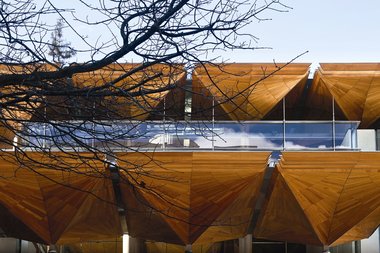
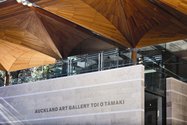


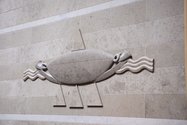
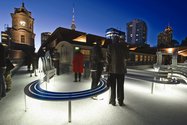
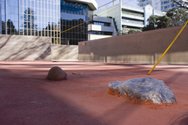
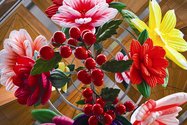




 Two Rooms presents a program of residencies and projects
Two Rooms presents a program of residencies and projects Advertising in this column
Advertising in this column



This Discussion has 0 comments.
Comment
Participate
Register to Participate.
Sign in
Sign in to an existing account.